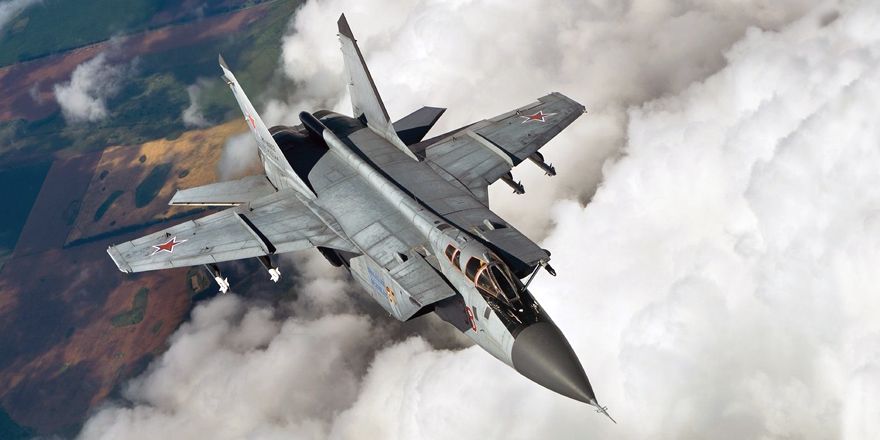


The incursion lands only days after a mass Russian drone breach of Polish airspace on 9–10 September and a further drone entering Romania on 13 September. Both incidents prompted fighter scrambles and new allied measures, but no kinetic engagement against the violating platforms.
Since a Russian Kh-55 cruise missile crossed Poland and fell near Bydgoszcz in December 2022—only discovered months later—the allied pattern has been consistent: rapid condemnation, summonses, and interceptions, but limited military action at the point of violation. For Moscow, the allied playbook is legible. The latest MiG-31 episode appears to probe whether that playbook has changed.
NATO’s answer has been to scale presence rather than alter rules of engagement. On 12 September, the Alliance launched Operation Eastern Sentry, a posture package spanning the eastern flank with additional combat air, airborne early warning and air-defence assets. Contributions include F-16s, Eurofighters, Rafales, F-35s, and a SAMP/T battery in Estonia, alongside a Danish anti-air warfare frigate. Eastern Sentry is designed to be adaptive and integrated, but it remains a deterrent and surveillance-led response framework.
Against that backdrop, the choice of aircraft matters. The MiG-31 airframe is used in several roles, including long-range interception and—on the MiG-31K variant—carriage of the Kh-47M2 “Kinzhal” aeroballistic missile. Estonia has not stated which variant crossed its airspace. The sortie’s flight profile over the Gulf of Finland, simulating a vector toward Tallinn before egress, is consistent with a radar-mapping or reaction-testing mission rather than a strike, but the ambiguity is itself the point: to observe which NATO sensors light up, which quick-reaction aircraft launch from which bases, and how quickly they achieve an intercept.
Given Eastern Sentry’s fresh deployments, a multi-axis test is logical. The incursion would have given Russian operators insight into:
which Baltic and Nordic radars (Estonia, Latvia, Lithuania, Finland, Sweden, Poland) activated and on what bands;
time-to-tasking for QRA flights and the origin airfields;
airborne early-warning orbits and hand-offs; and
any changes to allied emissions control introduced after the Polish and Romanian incidents.
Open sources do not yet detail concurrent activity from Kaliningrad-based sensors, electronic support measures or Baltic Fleet units on 19 September; those data points will shape assessments of follow-on actions.
EU leaders condemned the violation. The European Council President has put a “collective response to Russia’s actions” on the agenda for the informal European Council in Copenhagen on 1 October. That meeting will also consider defence readiness and support for Ukraine.
The Commission, for its part, has tabled a 19th sanctions package, including proposals to accelerate an EU ban on Russian LNG imports and to tighten measures on shipping, finance and circumvention networks. Approval requires unanimity, and capitals are already signalling reservations. Whatever the outcome, sanctions fall outside the immediate air-defence problem now manifesting over allied territory.
The allied centre of gravity remains air policing backed by reinforced posture, not active air defence with authority to neutralise violating aircraft or drones once they cross the line. That choice carries benefits—controlled escalation, legal clarity, and alliance unity—but it also sets expectations. After Poland’s Article 4 move and Eastern Sentry’s activation, Russia has quickly tested whether practice has changed. On current evidence, it has not.
If the objective is to deter further penetrations, two questions now confront NATO governments:
Rules of engagement and authorities. Are frontline allies empowered—under national and NATO command arrangements—to disable or down unmanned intruders and, in extremis, manned aircraft that persist in violating airspace after warning? Clarifying and signalling these authorities, even if bounded and conditional, would reduce ambiguity that invites testing. (Romania has legislated to allow shoot-downs of unauthorised drones in peacetime, but practical enforcement protocols still matter.)
Sensor-to-shooter timelines. Eastern Sentry adds mass, but the decisive metric is time from detection to effect. Publishing non-sensitive performance targets—scramble times, interception windows, and joint command hand-offs—would demonstrate that allied reactions are not merely prompt but predictable in a different way: predictably fast and capable of denial.
Estonia’s case underscores that Europe’s political machinery is engaged—sanctions, statements and a leaders’ meeting in 12 days’ time. The operational question is narrower and more urgent: whether NATO’s posture on the eastern flank now couples its surveillance and interception strengths with clearly communicated consequences for repeat violations. Until that is settled, Moscow will continue to measure the same variables—and plan accordingly.